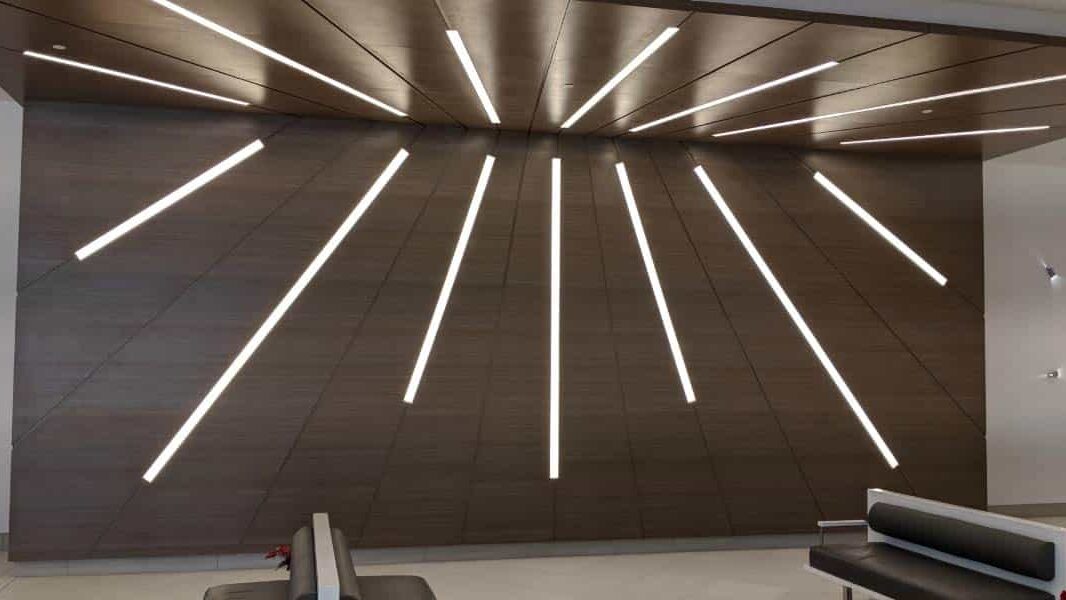
What is Architectural Lighting?
Architectural lighting is all about how light is used in buildings. It helps to make spaces look good and work well. This type of lighting is carefully planned to highlight important features of a building, like its shape, colors, and textures.
Defining Architectural Lighting
Architectural lighting goes beyond mere illumination. It involves strategically placing light sources to accentuate the architectural features of a space, thereby enhancing its aesthetic appeal and functionality. This type of lighting is meticulously planned to complement the structure and purpose of a building.
The Importance of Architectural Lighting
The primary objective of architectural lighting is to create an environment that is both visually appealing and functional. Here are some key purposes it serves:
1. Aesthetic Enhancement: Architectural lighting brings out the beauty of a building by emphasizing its unique design elements. Whether it’s the detailed craftsmanship of a historic monument or the sleek contours of a modern edifice, the right lighting can make these features more prominent.
2. Functionality: Proper lighting is essential for making spaces usable and safe. In work environments, for instance, good lighting can boost productivity and reduce eye strain. In public spaces, it ensures safety and visibility.
3. Atmosphere Creation: Lighting sets the ambiance of a space. Warm, soft lighting creates a cozy and welcoming environment, while bright, cool lighting is more invigorating and suitable for work areas.
Types of Architectural Lighting
Architectural lighting is typically categorized into several types, each serving a unique purpose:
1. Ambient Lighting: This provides the general illumination of a room, establishing the overall light level. It ensures that people can move around safely.
2. Task Lighting: This type of lighting is focused on specific areas where activities like reading, cooking, or working are performed. Examples include desk lamps and kitchen counter lights.
3. Accent Lighting: Used to highlight particular features within a space, such as artwork, architectural details, or indoor plants. It adds depth and drama by drawing attention to these elements.
4. Decorative Lighting: These fixtures serve a dual purpose of providing light and enhancing the décor. Chandeliers, pendant lights, and decorative wall sconces fall into this category.
Considerations in Architectural Lighting Design
Designing effective architectural lighting involves several critical considerations:
1. Light Quality: The color temperature and color rendering index (CRI) affect how a space looks and feels. Warm lighting tends to create a relaxed atmosphere, while cool lighting is ideal for work environments.
2. Lighting Control: Modern architectural lighting often includes smart controls that allow for adjustments in light intensity, color, and timing. This can improve energy efficiency and user comfort.
3. Energy Efficiency: Sustainable design is a priority in contemporary architecture. Using energy-efficient lighting solutions, such as LED architectural lights, helps reduce energy consumption and environmental impact.
4. Integration with Architecture: Lighting should seamlessly blend with the architectural features of the space. This involves thoughtful placement, style, and sizing of fixtures to ensure they enhance the overall design.
The Evolution of Architectural Lighting
With advancements in technology, architectural lighting continues to evolve. Innovations such as smart lighting systems, tunable white lights, and human-centric lighting are paving the way for more dynamic and responsive lighting solutions. These technologies offer greater customization and control, allowing for more personalized and efficient lighting designs.
Conclusion
Architectural lighting is a vital aspect of design that significantly impacts the aesthetics and functionality of spaces. By understanding its principles and applications, designers can create environments that are both visually stunning and practical, enhancing the overall experience for those who use them.

